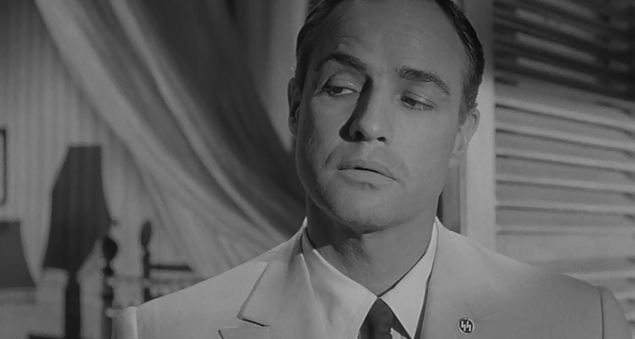Critics and studio officials alike have suggested that the reason the film Morituri failed to be a smash in 1965 was due to the fact that nobody understood the title, although I would beg to differ. If this had been the case after all, we’d have seen low, low audiences at Avatar, Quo Vadis, etc.
The real reason people sometimes see films is word of mouth, and one thing that stops people recommending them is when the film has no end. It’s more common than you think, and it always puzzles me. Yes, it’s easy to get your story in a complete knot when you are writing, but at the same time it is a fairly basic principle that if you are to shoot a script, you should be confident beforehand that it all ties up nicely.
So Morituri, which is a first rate movie with great action, great acting and great sets, plays very well until the end, which is rather non-existent. A pity — no matter how much you enjoy the first 100 minutes of a film, the last five can ruin your night and make you feel like you’ve seen something quite poor.
Trevor Howard has a small and fairly typical role in Morituri, the British officer overseas in WWII. He blackmails Marlon Brando’s character into carrying out a sabotage operation and then twitches off to another similar role elsewhere. He’d actually been doing this since 1949, in The Third Man, playing the somewhat dry, somewhat crusty, but still capable British officer. 1965, as it happened, also saw him appear in Operation Crossbow, Von Ryan's Express and The Liquidator.
Rather than concentrating on the tricky title, anybody could be sold on Morituri on the promise of a head to head between Yul Brynner and Marlon Brando. Brando is of course the winner, as he always is on screen, and in Morituri he’s at his physical best leaping about the ship and climbing nimbly throughout. One can’t forget Brando’s astonishing looks too, and his crazy acting style. Throughout Morituri, you can see Marlon Brando taking odd pauses and striking poses that any director and viewer know are unnecessary, but which are a part of his technique nonetheless.
Brando does make great use of his one prop in Morituri — an SS pin — how he loved wearing it! The pin features often in the finished film, either in its simple shock on Brando’s lapel, or as token used for measuring a rendezvous point on the map.
It’s a shame about the end, because up until then the direction is good and features some innovative stuff on board the ship. The camera makes incredible use of the maritime setting, and there aren’t many movies like this that do. There are aerial shots as well as tricky interior shots which probe the depths of the ship’s engine room, and do so without Steadicam; and the film is worth seeing for these alone I reckon.
The Steadicam, since I am discussing it, was used first in the Woody Guthrie biopic Bound for Glory (1976) – although audiences saw it first in Marathon Man (1976) which was released two months before the Woody Guthrie film - I mention that simply for those who adore film trivia. Now back to Brando.
Marlon Brando made some unusual career choices during the sixties, but most will argue now that his ideas were way ahead of their time. His range was exceptional and his stillness, vocal and facial acrobatics are still studied hard today by actors like Robert DeNiro and Sean Penn.
I’ve heard that Brando turned down the part of Lawrence of Arabia, and having seen that epic again, or parts of it at least over the Easter weekend, I am glad he did. There are also professed movie buffs out there who aren’t sure what Brando was even doing in the 1960s, up until his amazing ‘comeback’ in The Godfather in 1972. Brando however had started the 60s by playing in Mutiny on the Bounty (1962), and was falsely blamed for it going massively over budget.
Brando’s choice of this role in Mutiny on the Bounty was that he preferred Tahiti to the desert, which is fair enough, but as for his absence in the 1960s, I don’t believe in it, and I think his talents remain obvious. In Morituri, his German accent is brilliant, and the film rolls along finely, with a thoroughly novel score from Jerry ‘The Omen’ Goldsmith. It’s not a heroic movie, like for example Where Eagles Dare, and although it’s as close as Brando came to doing an action movie, it’s mostly about wits, basic resources and survival against a fanatical Nazi regime that is threatening to throttle the world.
One final note is that Marlon Brando was able to use his influence to secure a role for his best friend Wally Cox as the ship's morphine addicted doctor. Wally Cox was trying at the time to branch out into serious parts and this is a fairly serious film, and a great place to be seen.
Although regularly cast as a meek milquetoast, Wallace Maynard Cox was actually strong and athletic, as well as being a master electrician who wired his own house.
I also noticed recently that Wally Cox appeared in the last ever film footage taken of Marilyn Monroe:
The footage was shot on the 1st June 1962, and Marilyn was dead on August 2nd.



